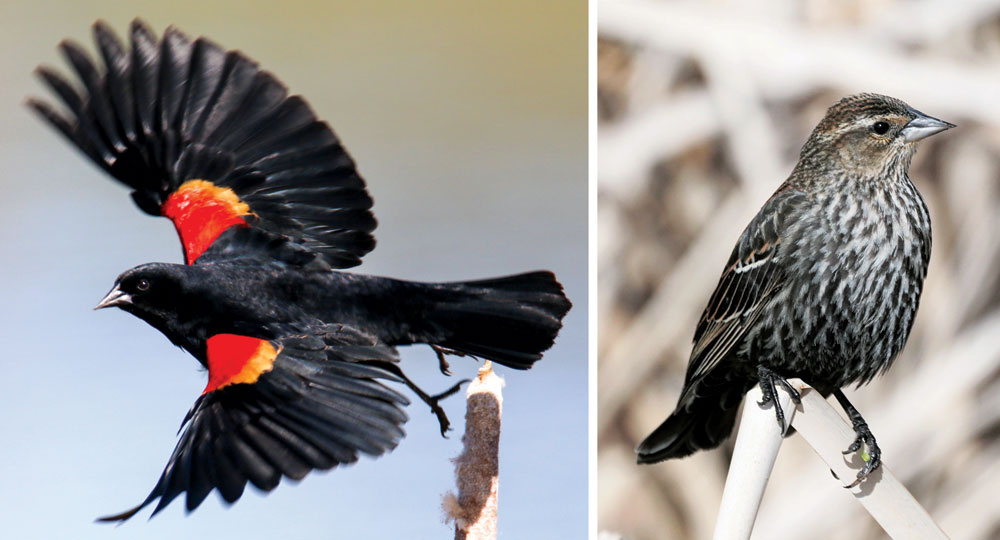
Male: Length: 14.6-15.3 inches ; Weight: 7.8-14.5 ounces; Wingspan: 24.4-35.4 inches. Female: Length: 16.5-17.7 inches; Weight: 11.6-24.0 ounces; Wingspan: 29.5-35.4 inches
Cooper’s Hawk
The Cooper’s hawk display upright posture with a very long tail. Adults are steely blue-gray above with warm reddish bars on the underparts and thick, dark bands on the tail. Juveniles are brown above and crisply streaked with brown on the upper breast.
They live in wooded habitats from deep forests to backyards. Their unique anatomy and flying skills allow them to tear through dense, cluttered trees at high speed in pursuit of other birds.
Medium-sized birds are their main targets: European starlings, mourning doves, rock pigeons, along with American robins, some jays, northern flicker, as well as quail, pheasants, grouse, and chickens. Cooper’s hawks sometimes eat mammals like chipmunks, hares, mice, squirrels, and bats.

Length: 6.7-9.1 inches; Weight: 1.1-2.7 ounces; Wingspan: 12.2-15.8 inches
Red-winged Blackbird
Male red-winged blackbirds spend much of the breeding season sitting on a high perch over their territories singing their hearts out.
They are the most abundant-living land bird in North America. Bird-counting censuses of wintering red-winged blackbirds show that loose flocks can number more than a million birds, and the full number of breeding pairs may exceed 250 million in peak years. Red-winged blackbirds flock with other blackbirds, grackles, cowbirds, and starlings, feeding on the open ground and roosting in flocks of thousands.
The female is smaller than the male. The male is all black with a red shoulder and yellow wing bar while the female is a nondescript dark brown.
Red-winged blackbirds eat insects in the summer and seeds in the winter.
Photos and information by George Ho
CLICK HERE for a pdf of George Ho’s photojournalistic story about a juvenile Cooper’s hawk robbing a songbird nest.



0 Comments